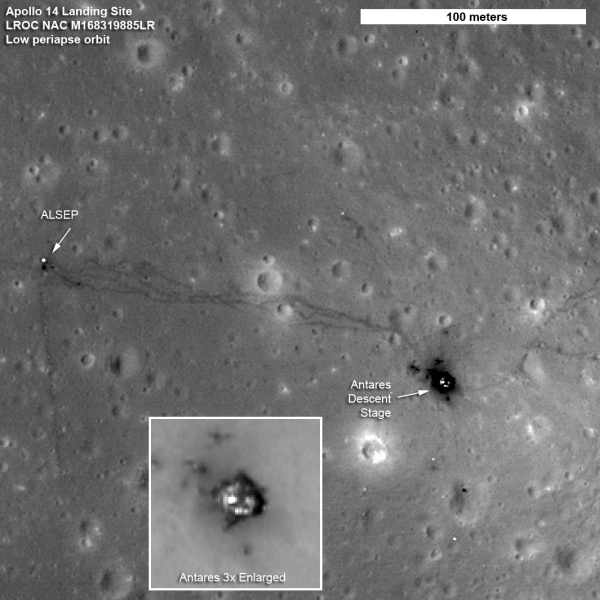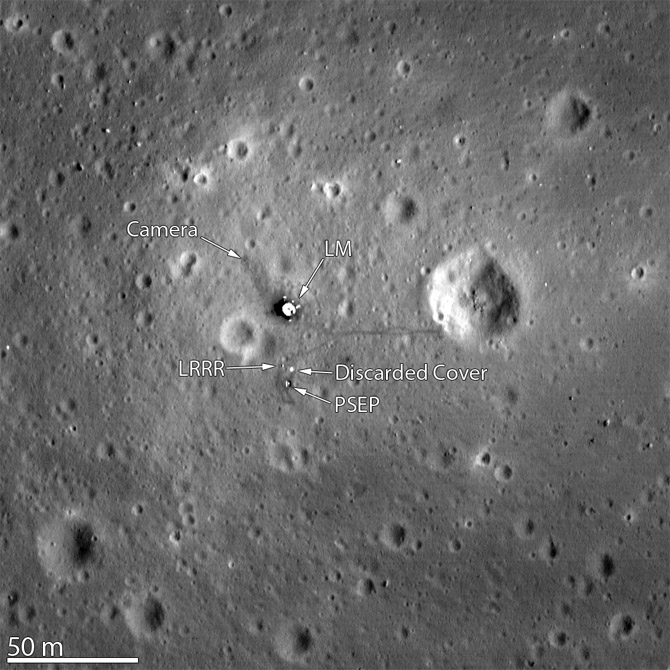
|
The Lunar Reconnaissance Orbiter is currently still orbiting the moon in an eccentric polar mapping orbit. Data collected by LRO since its launch in 2009 have been described as essential for planning NASA's future human and robotic missions to the moon. Its intense photographic mapping program has identified safe future landing sites, and located potential resources on and under the surface. The orbiter has made a 3D map of the moon's surface at 100-meter resolution, with 98.2% of the moon's surface now completed. It has also photographed at higher resolution the Apollo landing sites. LRO spent its first three years in a low polar orbit collecting detailed information about the moon. After this initial orbit, LRO transitioned to a stable elliptical orbit, passing low over the lunar south pole. With seven powerful instruments, LRO has collected a massive amount of data about the moon.  Some photos from the LRO collection are reproduced here. Click on each to see a large version; click on that to reduce it.
Some photos from the LRO collection are reproduced here. Click on each to see a large version; click on that to reduce it.Its orbit around the moon has dipped as low as 21 km above the surface, allowing for spectacular photos from its wide angle camera. LRO is managed by NASA Goddard.  Instruments on board the LRO have also mapped in high resolution all the Apollo landing sites. At the right you can see the paths left by astronauts Alan Shepard and Edgar Mitchell as they walked around their Apollo 14 landing site. (At the end of their second walk, Shepard famously hit two golf balls). The descent stage of the lunar module Antares is also visible.
Instruments on board the LRO have also mapped in high resolution all the Apollo landing sites. At the right you can see the paths left by astronauts Alan Shepard and Edgar Mitchell as they walked around their Apollo 14 landing site. (At the end of their second walk, Shepard famously hit two golf balls). The descent stage of the lunar module Antares is also visible.By September 2015, LRO had imaged nearly three-fourths of the lunar surface at high resolution.
Near the end of the two and a half hours spent on the surface. Armstrong took a look inside a nearby crater; this was the farthest either astronaut ventured from the landing site. Compared to Apollo 12 and 14, which allowed for more time on the surface, and Apollo 15, 16, and 17, which had the benefit of a Lunar Roving Vehicle, Armstrong and Aldrin's surface activities were quite restricted. Their tracks cover less area than a typical city block! |

